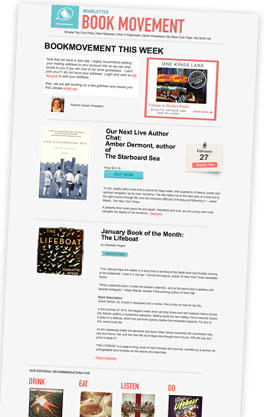BKMT READING GUIDES
Justice Is Served: A Tale of Scallops, the Law, and Cooking for RBG
by Leslie Karst
Paperback : 288 pages
2 clubs reading this now
0 members have read this book
—Karen Shimizu, Executive Editor, Food & Wine
When Leslie Karst learned that her offer to cook dinner for Supreme Court Justice Ruth Bader Ginsburg and her renowned tax law ...
Introduction
“The book is a romp from cover to cover—and, just like a great meal, left me ready for more.”
—Karen Shimizu, Executive Editor, Food & Wine
When Leslie Karst learned that her offer to cook dinner for Supreme Court Justice Ruth Bader Ginsburg and her renowned tax law professor husband, Marty, had been accepted, she was thrilled—and terrified. A small-town lawyer who hated her job and had taken up cooking as a way to add a bit of spice to the daily grind of pumping out billable hours, Karst had never before thrown such a high-stakes dinner party. Could she really pull this off?
Justice Is Served is Karst’s light-hearted, earnest account of the journey this unexpected challenge launched her on—starting with a trip to Paris for culinary inspiration, and ending with the dinner itself. Along the way, she imparts details of Ginsburg’s transformation from a young Jewish girl from Flatbush, Brooklyn, to one of the most celebrated Supreme Court justices in our nation’s history, and shares recipes for the mouthwatering dishes she came up with as she prepared for the big night. But this memoir isn’t simply a tale of prepping for and cooking dinner for the famous RBG; it’s also about how this event, and all the planning and preparation that went into it, created a new sort of connection between Karst, her partner, and her parents, and also inspired Karst to make life changes that would reverberate far beyond one dinner party.
A heartfelt story of simultaneously searching for delicious recipes and purpose in life, Justice Is Served is an inspiring reminder that it’s never too late to discover—and follow—your deepest passion.
Editorial Review
No Editorial Review Currently AvailableExcerpt
Prelude “Dinner cooked by Leslie January 28 would be fine. R.B.G.” So read the message on the screen, an email forwarded from my father. Blinking rapidly to keep my contact lenses from wigging out, I had to stare at the words—succinct though they were—and concentrate, to make sure I was reading them correctly. Yes. It did say that. I leaned back in my chair to let the significance of the text wash over me, then laughed out loud—one of those giddy, explosive laughs, akin to the bark of the sea lions that like to hang out on our fisherman’s wharf. My partner Robin wasn’t home, so no one heard me but our dog Rosie, who was asleep on the couch. She lifted her head at the sound and looked my way expectantly, her enormous bat-like ears at full attention. Then, when I kept on chuckling and shaking my head and slapping my knee, she decided something was up and jumped off the couch to investigate. I took Rosie’s soft face in my hands and looked into her eyes. The black-and-white dog returned my steady gaze. Even though she was half Border Collie, I knew she could not be expected to understand the full import of the communication I had just received. But I had to tell someone the exciting news. “Rosie,” I announced proudly, “I am going to cook dinner for United States Supreme Court Justice Ruth Bader Ginsburg.” Turning to stare once again at the email message on my computer screen, I took a deep breath. It was May 3, 2005, and I had nine months to plan the most important and elegant dinner party of my life. With a slow exhale, I did my best to ignore the wave of heat that had swept over me like a Santa Ana wind. And then I smiled. Chapter One From Pescara to Paris and the Pacific The email didn’t come as a complete surprise. Some months earlier, my father and I had been discussing his upcoming retirement after forty years as a constitutional law professor at the UCLA School of Law. We were seated at Robin’s and my dining room table, cups of coffee and the morning newspaper spread out before us. “You know that I’ve kept in touch with Ruth Ginsburg, right?” Dad asked. “Sure,” I said. “At least I remember her being one of the ‘law people’ you and Mom used to refer to back when I was a kid. And I always assumed you stayed friends over the years.” “Well, it wasn’t as if we were ever close friends. ‘Warm colleagues’ is probably a better description.” Dad tapped an index finger on the side of his ceramic mug. “Back when she was still teaching, we used to exchange friendly notes and reprints of the legal articles we’d published, and then after she was on the bench, I’d occasionally recommend students to clerk for her.” “Uh, huh...” The wheels spinning in my brain were trying to ascertain where exactly this conversation was going. Dad took several sips of his black coffee, in no hurry to get to the point, then finally set down the mug and cleared his throat. “So anyway, ever since Ruth was appointed to the Supreme Court, I’ve been trying to convince her to come give a talk at the law school, but she’s never accepted my invitation.” A pause. “Until now. . . ” “What? You mean this time she said yes?” His mouth twisted into a sly grin. “She didn’t exactly commit to coming, but when I told her that next year would be my final one teaching—and hence her last chance to come speak at my invitation—she did indicate that she might accept.” “Ohmygod,” I blurted out.” If she does say yes, you and Mom should invite her for dinner and I can come down to your house and cook.” I’d mostly been joking and expected him to merely laugh in a “ha-ha, that’s a ridiculous notion” kind of way. But instead, Dad cocked his head, a serious look in his eyes. “That sounds like a great idea,” he said. Ohmygod. Had I really just agreed to host a dinner party for Ruth Bader Ginsburg? What on earth had I gotten myself into? * * * * My father and Ruth Ginsburg had met in the 1960s, when he’d been teaching at Ohio State and she at Rutgers. At the time, the two were both involved with comparative law, Dad focusing on Latin American land reform issues and Ruth on Swedish civil procedure. I still have a vivid picture of my mom recounting the first time she met Ruth at some “law thing” in Italy. It was the summer of 1970, and I was almost fourteen and not the least bit interested in the Congress of the International Academy of Comparative Law, except that it meant my parents would be away for several weeks, leaving us kids in the care of a hired sitter. We adored Mitzi, who let us pretty much run wild and who quickly exhausted all the money my folks had left for expenses, spoiling us with all kinds of decadent junk food my mother would never buy. Little did I suspect—as my adolescent taste buds were reveling in frozen pepperoni pizzas, Doritos, beef jerky, and ice cream sandwiches—that some thirty-five years hence I’d be preparing a lavish, gourmet feast in honor of one of the attendees of that “law thing” in Italy. Meanwhile, on one of the free days at the comparative law congress on the other side of the globe, some of the law professors and their spouses went to the beach at Pescara, on the Adriatic Sea. “I walked down to the water,” my mother later told me. “It was calm. More like a lake than the ocean. And the water got deep, up to your waist, and then shallow again as you walked out.” Mom smiled at the memory. “And there was little Ruth in her bathing suit, testing the water with her toes. We waded out together, giggling.” She demonstrated for me, prancing about with her arms half raised, looking just like a school girl. (I suspect that this reenactment more accurately represented my ever schoolgirlish mother than it did the demure law professor.) “And that’s how I first met her,” said Mom. “Who would have guessed that little Ruth, the shy Swedish civil procedure professor, would someday become Justice Ginsburg, seated upon the United States Supreme Court?” Interlude Lund, Sweden is not where the young Ruth Bader would likely have imagined herself living at the age of twenty-nine. The granddaughter of émigrés from Central Europe and Russia, Kiki (as she was known from childhood through college) grew up in the Flatbush area of Brooklyn, home to Irish, Poles, Jews, and Italians—but not a whole lot of Swedes. Staying close to home, she attended Cornell University, spent two years at Harvard Law School, and then—following her husband back to New York—transferred to Columbia University, where she finished at the top of her graduating class. Nevertheless, not a single law firm in the entire city of New York would consider hiring her. It was simply too much, she would later say: a woman, a mother of a young child, and a Jew. Small wonder then, that after completing a judicial clerkship with Judge Palmieri of the Southern District of New York, the young lawyer Ruth Bader Ginsburg decided not to seek employment at a high-powered law firm. Instead, she accepted an offer to coauthor a book on Swedish civil procedure. Did she need to know Swedish for the project? No problem; she would spend the next year studying the language with a former lead male dancer at the Stockholm Ballet now enrolled at Columbia, who gave Swedish lessons on the side. And then, once the new language was under her belt, she would head off to Lund, leaving her six-year-old daughter temporarily in the care of her tax attorney, but eager-to-do-whatever-I-can-to-help-my-wife’s-career husband, Marty. So began a lifetime love affair with procedure and comparative law. Upon completing her Swedish adventure (which also included helping translate the Swedish Code of Procedure into English), Ginsburg was offered a position teaching civil procedure with the law faculty of Rutgers University. And shortly after this, she began attending and speaking at comparative law conferences—such as the one in Pescara, Italy, where she and my mother waded out together that day into the calm sea.Discussion Questions
From the author:1. What expectations did you bring to a memoir blending food, law, and RBG?
2. The book interweaves Leslie’s personal story with RBG’s biography. How does the juxtaposition of their lives shape your reading of both women?
3. How does Robin come across in the early chapters, and what tone does she bring to the story?
4. Consider the theme of partnership in the memoir. How do the relationships between Leslie and Robin and that of her parents mirror or diverge from each other?
5. In what ways do Leslie’s parents shape her relationship to ambition, identity, and confidence?
6. How does the use of humor influence your experience of the memoir, especially during moments of anxiety or self-doubt?
7. What does cooking come to represent for Leslie as the memoir unfolds?
8. Discuss which food descriptions felt most vivid and what made them stand out?
9. How does Leslie’s perfectionism—especially around hosting—resonate with your own experiences?
10. Leslie describes her ambivalence about law and her envy of people with a true calling. Did you relate to her struggle with career identity? Why or why not?
11. How does Martin Ginsburg’s presence contribute to the spirit and depth of the book?
12. Consider the role of place in the memoir—Santa Cruz, Paris, and Los Angeles/UCLA. How do these locations reflect the phases of Leslie’s life and her internal shifts?
13. In what way does the memoir shift your understanding of RBG as both a private person and a public figure? Which aspects of her journey stood out as most surprising?
14. How does the final dinner function symbolically for Leslie—emotionally, professionally, or personally?
15. What deeper meanings emerge from the title Justice Is Served after having finished the book?
Weblinks
| » |
Official website for the book
|
| » |
Publisher's book info
|
| » |
Kirkus review of book
|
| » |
Foreword review of book
|
Book Club Recommendations
Recommended to book clubs by 0 of 0 members.
Book Club HQ to over 90,000+ book clubs and ready to welcome yours.
Get free weekly updates on top club picks, book giveaways, author events and more








